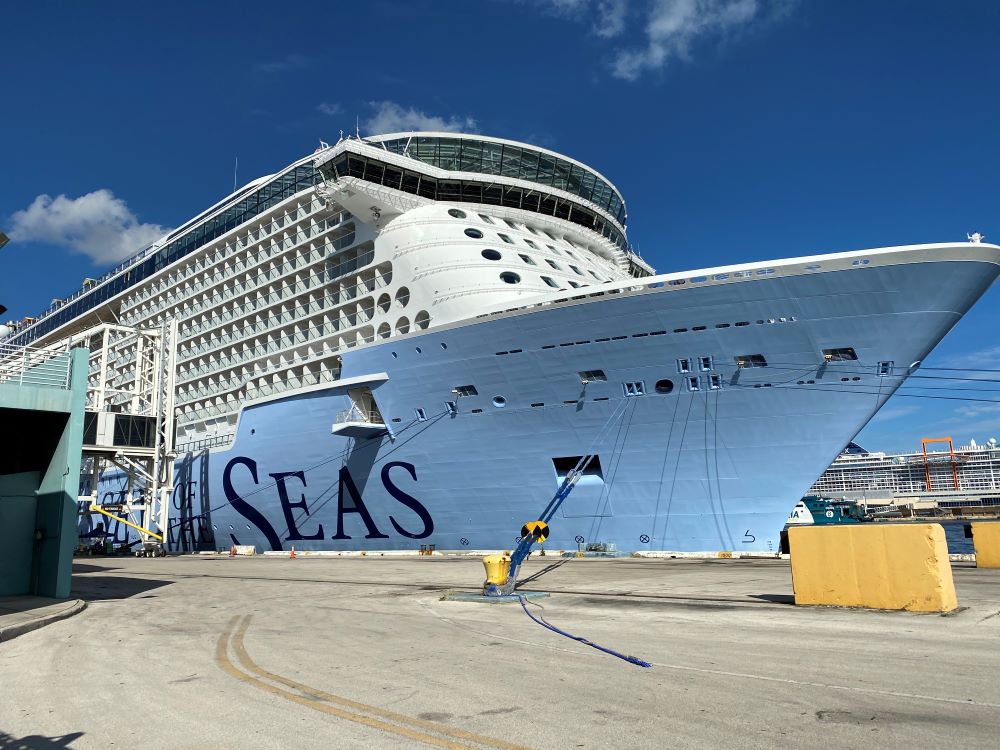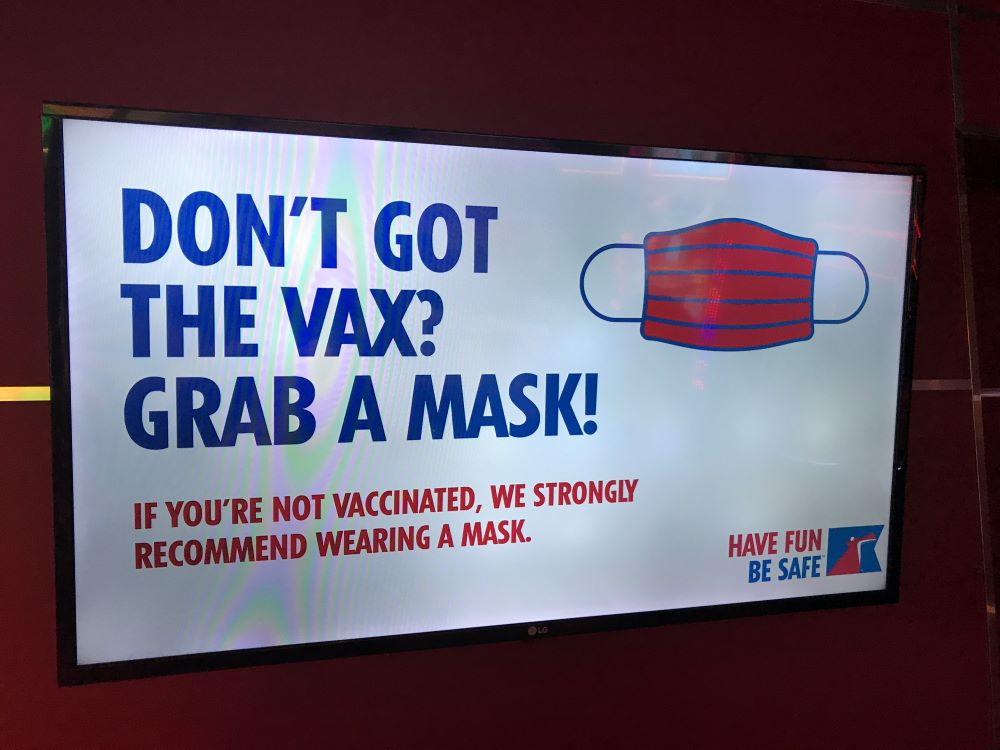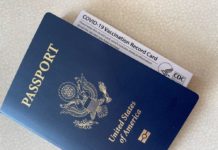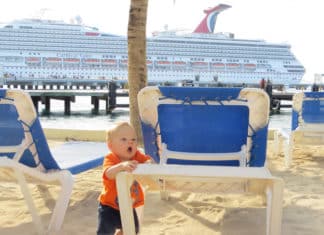When the health crisis first kicked into high gear in early 2020, the entire world was thrown for a loop. Schools, sports, and businesses shut down. In fact, life seemed to come to a standstill.

Over the following weeks and months the world slowly opened back up and life adjusted to a different way of doing things. That is, many things opened back up. One area that still remained closed was cruising.
While cruises halted voluntarily in March 2020, the Centers for Disease Control issued a “No-Sail Order” that kept ships docked for months. After several extensions, that program was replaced in late 2020 with the Conditional Sailing Order (CSO).
The CSO laid out the pathway for cruise ships to return to sailing, and the requirements that ships must meet to sail again. Within this order are a myriad of rules surrounding testing, port agreements, passenger screening, quarantining, and more. In short, the CSO is the guide to how ships must operate in the current environment.
The original order had an expiration date of November 1, 2021. Shortly before November, the CDC extended the order with a new expiration date of January 15, 2022.
Now the CDC is moving toward a voluntary program for the sailing order. Instead of being forced to comply with the rules in order to sail, cruise lines can instead work voluntarily with the health agency to mitigate cases. According to the CDC’s website:
“After the expiration of the Temporary Extension & Modification of the CSO, CDC intends to transition to a voluntary program, in coordination with cruise ship operators and other stakeholders, to assist the cruise ship industry to detect, mitigate, and control the spread of COVID-19 onboard cruise ships.”
- CDC.gov
Not everyone is excited about the change. Senator Richard Blumenthal, who has called for cruise ships to pause sailing during the Omicron wave, explicitly called on the CDC to extend the order. In fact, he sent an official letter to CDC Director Dr. Rochelle Walensky calling on her agency to issue an extension:
After recent COVID outbreaks on more than 90 cruise ships, strong steps to prioritize the health of passengers & crew are needed. The CDC should extend its Conditional Sailing Order & the cruise industry must be transparent about protocols, positive cases, & conditions on board. pic.twitter.com/QG4qKf6pbh
— Richard Blumenthal (@SenBlumenthal) January 14, 2022
However, all signs point to no further extension of the CSO.
Notably, in recent testimony before Congress, Dr. Walensky offered praise for the cruise industry, saying it has “stepped up” and was exceeding compliance with the CDC order without it even needing to be in place.*
And regarding the move to voluntary status for the sailing order?
“We anticipate this order will not be renewed, and the cruise ship industry will continue to understand that this is a really safe practice for those industries,” Dr. Walensky said.
*(For ships sailing from Florida, the CSO has been a voluntary program since July due to a legal challenge in that state. Even so, cruise ships have continued to follow strict health and safety requirements, including requiring proof of vaccination and testing before boarding.)
Will the Cruise Experience Change for Passengers?

As the order moves to voluntary status, many cruise passengers have questions about what that means for their upcoming trip. Some may think a move to voluntary status means cruising will go back to how it was before the pandemic. That doesn’t seem to be the case.
Already Voluntary in Florida
First, as mentioned the CDC’s rules have already been voluntary for ships sailing from Florida. Even so, cruise lines continue to have tough protocols in order to sail. There seems little reason to think making the order voluntary everywhere would change cruise lines’ outlook.
For instance, Norwegian Cruise Line requires 100% vaccination on its ships, even those sailing from Florida. As well, there is universal testing at the pier before embarking on the ship and facemasks now required when indoors. And when there were cases recently discovered aboard Norwegian Jewel sailing from Miami, the ship ended its journey early and headed back to port.
“We have made every effort (and) spared no expense to have the most stringent protocols in the hospitality and leisure space,” Norwegian Cruise Line Holdings CEO Frank Del Rio recently said during a media call. “We will simply not take risks with the well-being of our crew and our guests for the sake of profit.”
Update: Norwegian Cruise Line Holdings, parent of Norwegian Cruise Line, Oceania Cruises, and Regent Seven Seas Cruises, announced it has opted into the CDC’s voluntary program following the expiration of the CSO.
Industry Plans no Change to Protocols
This focus on safety is backed up by Cruise Lines International Association (CLIA), an industry trade group of which most cruise lines are members.
In a statement responding to the transition to voluntary status for the CSO, the group emphasized the focus on health:
“CLIA ocean-going cruise line members will continue to be guided by the science and the principle of putting people first, with proven measures that are adapted as conditions warrant to protect the health of cruise passengers, crewmembers, and destinations.”
It also highlighted cruising’s “exceedingly high levels of vaccination” and required testing of passengers before boarding.
Thanks to these protocols, CLIA says that serious illness is sharply lower than what’s seen on land and that hospitalization is “extraordinarily rare.”
And when we reached out to the agency, a spokesperson told Cruzely, “The voluntary program or not, the fact remains that the CDC are still the regulators of the cruise industry here in the U.S. and we will continue to work closely with them in the interest of public health.”
“While our ocean-going member cruise lines do defer to the CDC’s guidance here in the U.S., I can tell you that our enhanced protocols are here to stay for the foreseeable future,” the spokesperson added.
Cruise Lines List Protocols in Place Through March
Finally, specific cruise lines themselves show no signs of making any changes to protocols.
Each cruise line maintains a page listing its latest requirements to sail. This covers everything from vaccine requirements to testing, masking, and more. If changes are made to cruise policy, these pages offer the most up-to-date information.
Here, there are multiple instances of protocols with end dates reaching far in the future.
For example, Carnival’s COVID-19 Guest Protocols says the cruise line will “continue to operate vaccinated cruises through March 31, 2022.” Mask requirements in certain areas of the ship run through March 30, 2022.
Norwegian Cruise Line recently extended its testing of all passengers at the terminal through February 28, 2022. Passengers sailing on or before that date will take a test at the port before boarding. After that date, testing will still be required, but will be the passenger’s responsibility to get a test within two days of boarding.
As well, facemask requirements say they are in place until at least January 31, even with NCL sailing 100% vaccinated cruises.
In other words, despite the (likely) move of the CDC order to voluntary status, cruise lines still plan to operate with rules as they were before the change.
One Thing We Think Could Change
The challenges of the health crisis led to cruise lines implementing some of the toughest requirements in all of the travel industry. And while the protocols haven’t kept cases at zero aboard ships, they have heavily mitigated the spread, especially prior to the Omicron variant.
As the CDC order moves to voluntary status, we’d expect cruising to still look much as it did under the requirements.
But there is one area that we think could change. When the CDC extended the Conditional Sailing Order in late 2021, they said that most cruise lines “disagreed that CDC’s Cruise Ship Color Status webpage was useful” for telling the public about cases on ships.
With this color-coded system, as little as one case can lead to a “non-green” status, but specific case counts and severity are not released. The result? A large number of ships can potentially be given a “yellow” or “orange” rating for an overall small number of actual cases.
Given the limitations, we wouldn’t be surprised if there are upcoming changes to that portion of the program.












